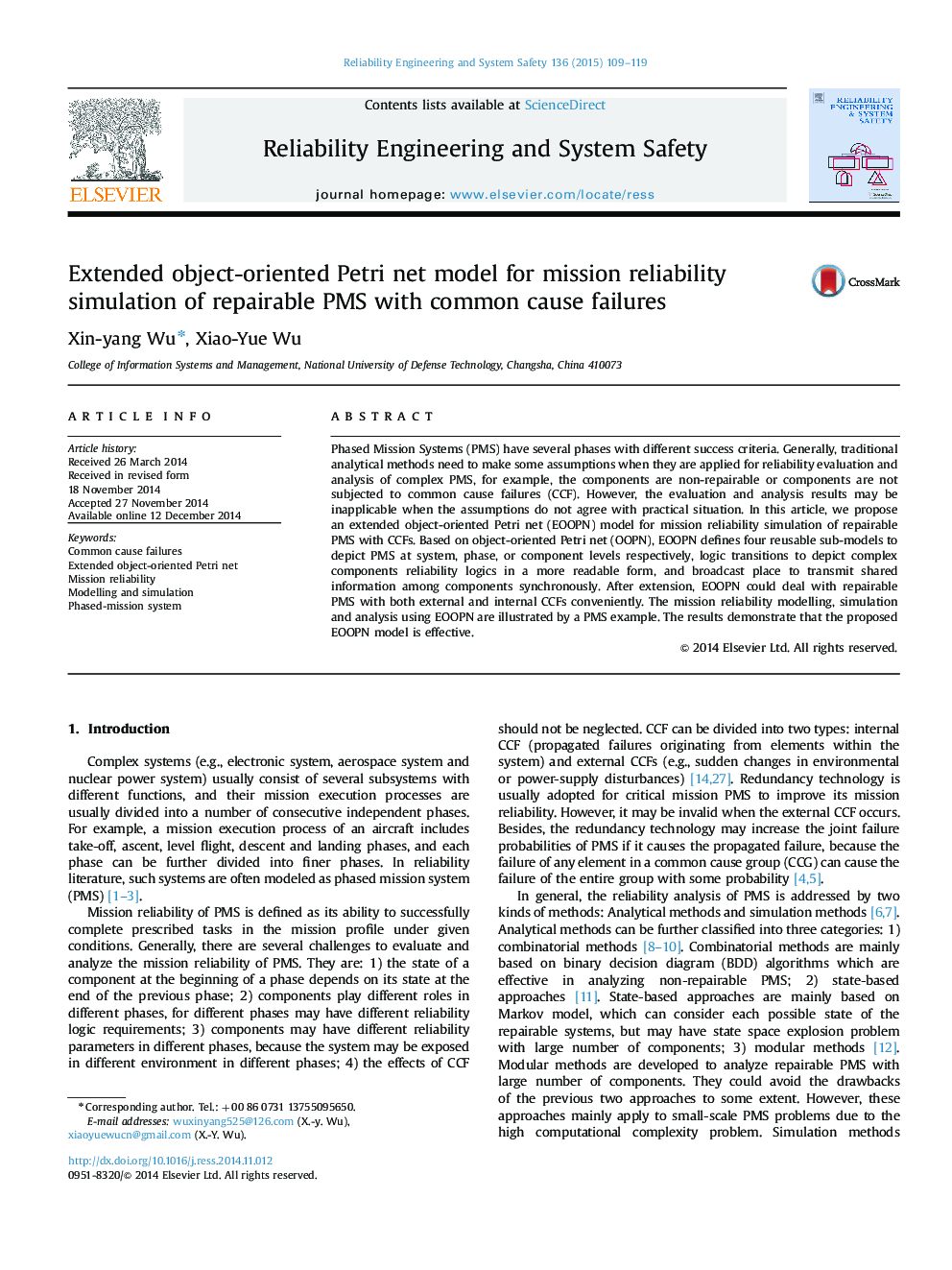| کد مقاله | کد نشریه | سال انتشار | مقاله انگلیسی | نسخه تمام متن |
|---|---|---|---|---|
| 806295 | 1468234 | 2015 | 11 صفحه PDF | دانلود رایگان |

• EOOPN model was effective in reliability simulation for repairable PMS with CCFs.
• EOOPN had modular and hierarchical structure.
• New elements of EOOPN made the modelling process more convenient and friendlier.
• EOOPN had better model reusability and readability than other PNs.
Phased Mission Systems (PMS) have several phases with different success criteria. Generally, traditional analytical methods need to make some assumptions when they are applied for reliability evaluation and analysis of complex PMS, for example, the components are non-repairable or components are not subjected to common cause failures (CCF). However, the evaluation and analysis results may be inapplicable when the assumptions do not agree with practical situation. In this article, we propose an extended object-oriented Petri net (EOOPN) model for mission reliability simulation of repairable PMS with CCFs. Based on object-oriented Petri net (OOPN), EOOPN defines four reusable sub-models to depict PMS at system, phase, or component levels respectively, logic transitions to depict complex components reliability logics in a more readable form, and broadcast place to transmit shared information among components synchronously. After extension, EOOPN could deal with repairable PMS with both external and internal CCFs conveniently. The mission reliability modelling, simulation and analysis using EOOPN are illustrated by a PMS example. The results demonstrate that the proposed EOOPN model is effective.
Journal: Reliability Engineering & System Safety - Volume 136, April 2015, Pages 109–119